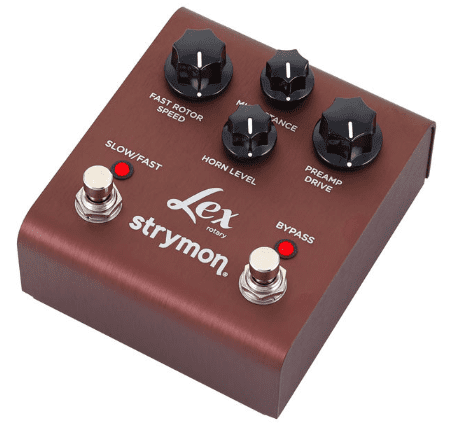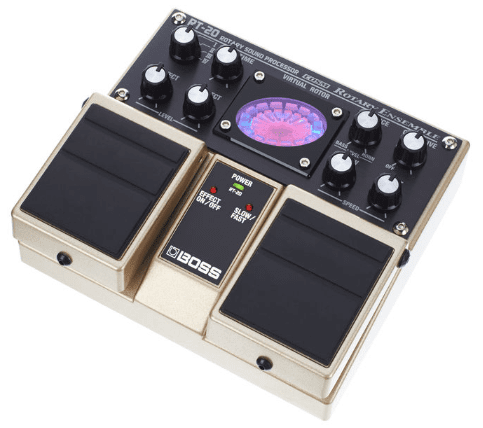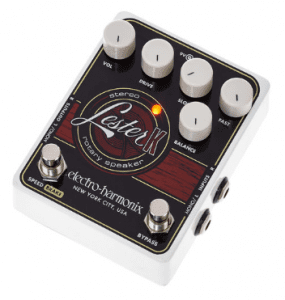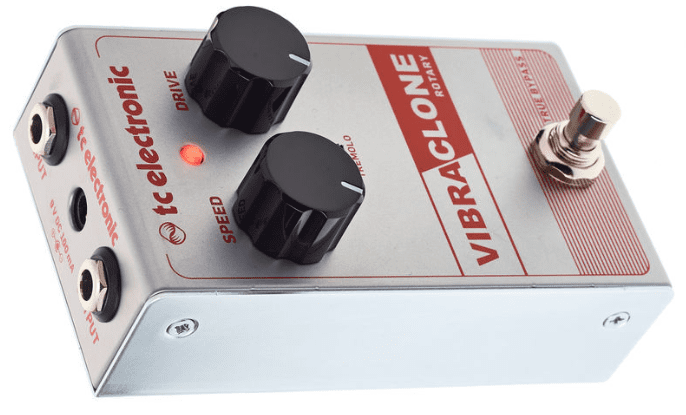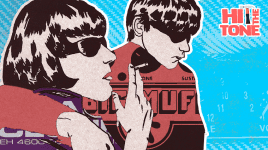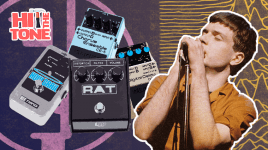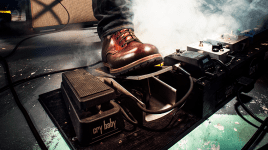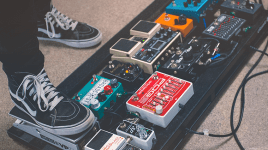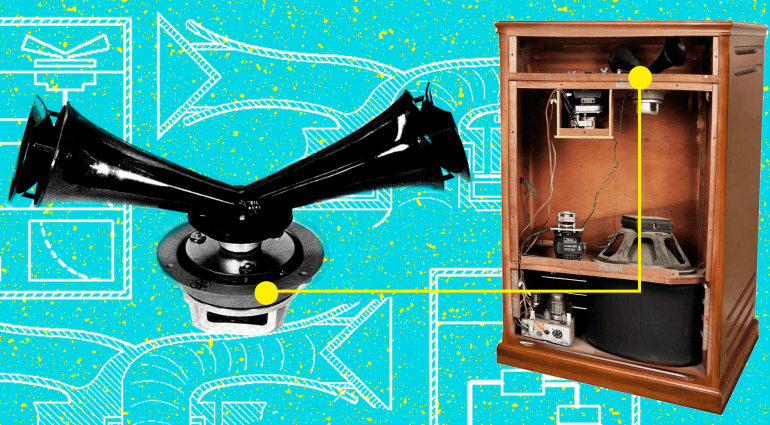
Anyone who loves the Hammond organ knows the sound. But it’s not the organ alone that creates this unmistakable sound of cathedral-like pulsating and shimmering tremolo. This sound is produced by the Leslie Cabinet connected to the organ, a special two-channel loudspeaker from the 1940s, which reproduces the high and low frequencies separately onto mechanically spinning components which characteristically deflect the sound. Electronic simulations of the legendary Leslie effect are often said to be not realistic enough. We think this is a myth. Today’s market offers a selection of effect devices for keyboardists and guitarists who are especially interested in emulating the sound of the famous “rotor cabinet”, and some brands are perfecting it. Read on…
And so it rotates…
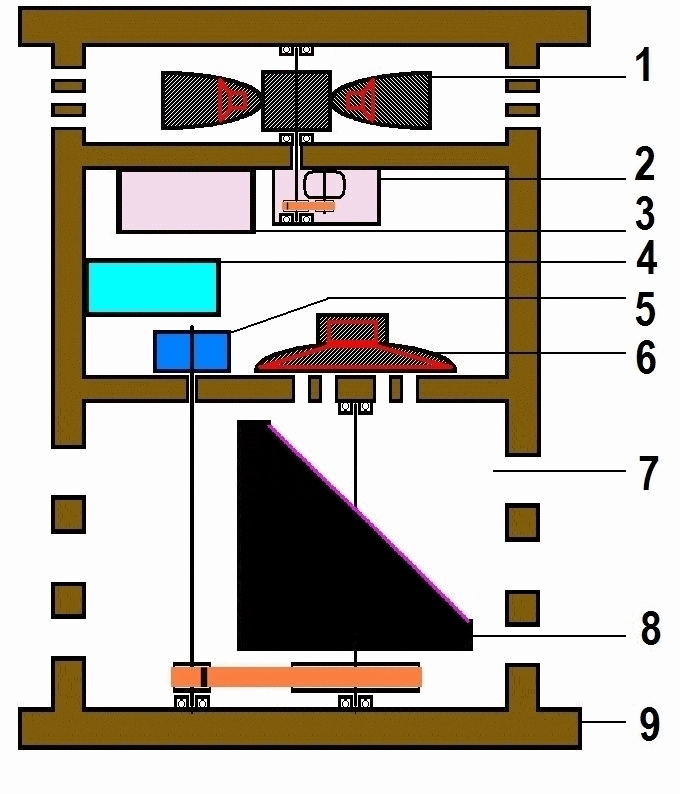
The spinning of the components inside this magic cabinet results in a special modulation of the pitch by exploiting the Doppler effect, which, depending on the speed of rotation, produces either a pulse effect or a special vibrato. The organ cabinet invented by the American Don Leslie allows its sound deflectors to rotate at two speeds: CHORALE (approx. 48 rpm) for a slow pulse and TREMOLO (approx. 380 rpm). In the STOP position the deflectors do not rotate:
You are currently viewing a placeholder content from Youtube. To access the actual content, click the button below. Please note that doing so will share data with third-party providers.
In addition to the impressive sound produced during rotation, the effects known as “rise” and “fall” are a typical and fascinating characteristic of mechanical sound deflection. Due to the weight differences between the two sound deflectors, one for bass frequencies (the drum or rotor) and the other for high frequencies (the horn), interesting effects are created when changing the speeds, since the bass rotor always accelerates and decelerates more slowly than the high frequency horn. You can hear the rise and fall effects in the first 23 seconds of this video:
You are currently viewing a placeholder content from Youtube. To access the actual content, click the button below. Please note that doing so will share data with third-party providers.
Not just for the organ!
Guitarists also use this powerful sound spinner, which can take their guitar sound to new dimensions. In the 1970s, only a few manufacturers tried the electronic simulation of the Leslie effect, which was only possible to a limited extent with analogue technology. Digital technology provided the springboard for further intensive developments, which can now be seen both in software and hardware. Today, in addition to perfect Hammond clones, there are also standalone effect devices which are much smaller, lighter and cheaper and reproduce the old Leslie effect surprisingly well. This makes it much easier for keyboardists and guitarists alike to take the famous sound with them on stage or into the studio.
To give you an idea of what the market has to offer, here are the 5 best ‘Rotary Speaker’ effect pedals ranging from just under €400 to less than €40! ?
NEO Instruments Ventilator II & mini Vent II
With the Ventilator II, the German manufacturer Neo Instruments sets the bar high for electronic Leslie simulation, now you can hear the Leslie in back-pocket-sized format! This pedal uses complex modelling algorithms to emulate a Leslie 122 rotor cabinet mic’ed with three mics – one for the bass and two for the treble rotor – as is common practice. Both rotation units can be adjusted independently. In addition to a drive section for an authentic overdrive effect, the Ventilator II also offers control of rotor speed and mix via an expression pedal and can be operated from an external remote switch.
The mini Vent II is a much smaller and cheaper version of the Ventilator II with the same sound standards as its big brother, but with the settings slimmed down. It lacks the potentiometers for parameter adjustment and the physical STOP button for rotor stop control. However, this can be activated by pressing the BYPASS and SLOW/FAST buttons at the same time. The mini Vent II has two slots for presets where all adjustments can be made and saved through an edit routine. If you don’t mind working with this preset function rather than with potentiometers you can save approx. €130!
Strymon Lex
With the Strymon Lex you get the high functionality and sleek design we always expect from Strymon and all the analog goodness of a Leslie speaker cabinet. What makes this pedal special are the settings for MIC DISTANCE and HORN LEVEL, controlling the proximity effect and the top end frequencies respectively. You can hold down SLOW/FAST and BYPASS simultaneously to access all secondary functions on the four knobs (FAST ROTOR SPEED, CAB DIRECTION, +/- 6dB BOOST/CUT, ACCELERATION TIME). Overdrive control, expression pedal compatibility, stereo output and more make this pedal unbeatable.
Boss RT-20 Sound Processor
The Boss RT-20 has made the Leslie cabinet accessible to keyboardists and guitarists in a handy and very robust format. With the help of Boss’s own COSM technology, the Boss RT 20 is a further development of the Leslie simulation from the Roland VK-7, VK-77 and VK-8 organs, which all faithfully emulate the Leslie 122. The RT-20 also features an overdrive to mimic the warm distortion of the Leslie cabinet, various settings for tuning the simulated rotors, and a connector for an expression pedal for manual speed control. Thanks to its robust design, the Boss RT-20 effect pedal is ready for tough stage use.
Electro Harmonix Lester G and Lester K
- Lester G
- Lester K
With the “Lester” model, the American manufacturer Electro Harmonix offers a Leslie effect stomp box that is available in two versions: ‘K‘ for use with keyboards and ‘G‘ for use with the electric guitar. Both differ in the input impedance and the frequency spectrum in which the controlling instrument lies. The control panel of the pedal is very simple and offers adjustment possibilities for the two rotor speeds, the overdrive and the balance between the two rotors. These are standard settings, which are also offered by the other pedals described above. Its special features include a emulated tube overdrive and a warm sounding rotary sound. Whether the musician chooses the ‘G’ or ‘K’ version is up to their personal taste.
tc electronic Vibraclone Rotary
The Vibraclone Rotary from the Danish manufacturer tc electronic is the cheapest solution for achieving the rotor speaker sound. As the name implies, it is a clone of the 1968 Fender Vibratone Speaker Cabinet and simulates, impressively, the sound of the rather short-lived original. Unlike a Leslie cabinet, the original Fender Vibratone was equipped with only a single rotating drum in front of the speaker and was specifically designed for guitar use. Equipped with two potentiometers for speed control of the rotor and a warm drive, the Vibraclone pedal features a toggle switch for switching between chorale or tremolo settings and a bypass button. While all other effect pedals mentioned above are suitable for use with organ and guitar, the Vibraclone Rotary Pedal is an inexpensive alternative for guitar use and fulfills this purpose very well.
What do you think of the Leslie effect? Is it outdated, overused, not modern enough for your ears or as fantastic as ever? Which simulation pedal do you prefer? Which ones did we miss? Let us know in the comments ?
You are currently viewing a placeholder content from Facebook. To access the actual content, click the button below. Please note that doing so will share data with third-party providers.
More InformationYou are currently viewing a placeholder content from Instagram. To access the actual content, click the button below. Please note that doing so will share data with third-party providers.
More InformationYou are currently viewing a placeholder content from X. To access the actual content, click the button below. Please note that doing so will share data with third-party providers.
More Information

